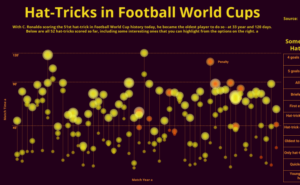“ChatGPT.” Wikipedia, 17 Feb. 2023. Wikipedia, https://en.wikipedia.org/w/index.php?title=ChatGPT&oldid=1139924984.
This is the main Wikipedia page to learn what ChatGPT is, such as its features and how it was launched. This will be helpful in the introduction of my essay on what ChatGPT is and how it was created.
Kay, Grace. “The History of ChatGPT Creator OpenAI, Which Elon Musk Helped Found before Parting Ways and Criticizing.” Business Insider, https://www.businessinsider.com/history-of-openai-company-chatgpt-elon-musk-founded-2022-12. Accessed 17 Feb. 2023.
This is a Business Insider article that gives a timeline with details on how OpenAI was founded into the creation of ChatGPT. I plan on using this source to provide a background of how ChatGPT was founded and the motives behind its creation.
Klie, Leonard. “OpenAI Introduces ChatGPT, a New Al Chatbot Model.” Customer Relationship Management: CRM, vol. 27, no. 1, Feb. 2023, pp. 10–11.
This is a scholarly article by Insight that focuses on how ChatGPT is being used today and in the future and whether we can rely on its information or not. I plan on using this to give the perspective of a scholar on how ChatGPT isn’t extremely reliable for important information.
Roose, Kevin. “Don’t Ban ChatGPT in Schools. Teach With It.” The New York Times, 12 Jan. 2023. NYTimes.com, https://www.nytimes.com/2023/01/12/technology/chatgpt-schools-teachers.html.
This is a NY Times article detailing how schools are currently reacting to ChatGPT and how it should be integrated within the school system. This is a great article to give perspective on how schools shouldn’t and can’t just ban ChatGPT which is here to stay.
Rudolph, Jürgen, et al. “ChatGPT: Bullshit Spewer or the End of Traditional Assessments in Higher Education?” Journal of Applied Learning and Teaching, vol. 6, no. 1, 1, Jan. 2023. journals.sfu.ca, https://doi.org/10.37074/jalt.2023.6.1.9.
This is a peer-reviewed academic journal that explores ChatGPT and its relevance for higher education. This is one of my favorite sources that is scholarly and provides unique perspectives which I will use when talking about how it should be integrated in school.
What Students Are Saying About ChatGPT – The New York Times. https://www.nytimes.com/2023/02/02/learning/students-chatgpt.html?searchResultPosition=3. Accessed 17 Feb. 2023.
NY Times article that contains direct quotes from students on their thoughts on ChatGPT. This is a great article that I will be using to give the perspective of what the students think of ChatGPT in comparison to the scholars and professors.
Yorio, Kara. “The ChatGPT Revolution: School Librarians Explore New AI Technology. Will It Dramatically Change Education?” School Library Journal, vol. 69, no. 2, Feb. 2023, p. 10.
This is a scholarly article where librarians discuss the implications of ChatGPT on education in the future. This journal article will be used to give yet another perspective on ChatGPT and its connection to education in the future.


